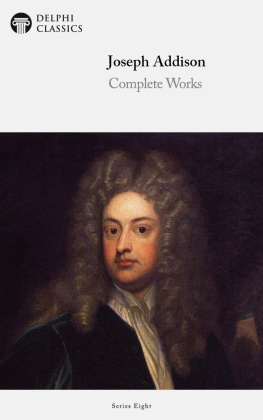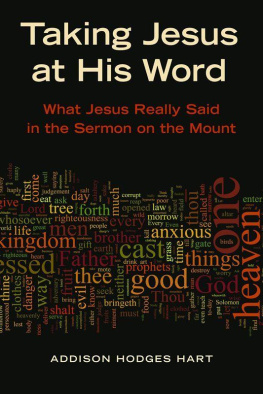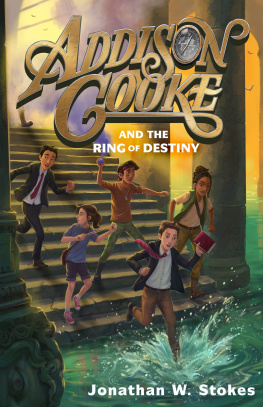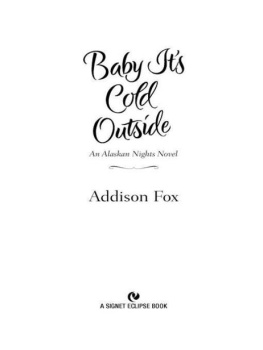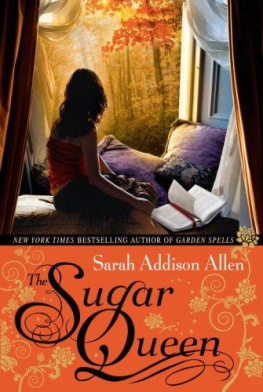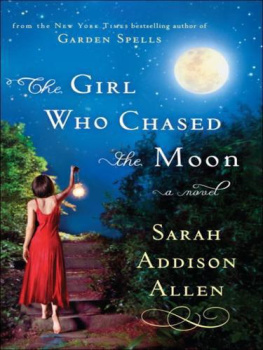
The Complete Works of
JOSEPH ADDISON
(1672-1719)

Contents

Delphi Classics 2017
Version 2


Browse our Main Series

Browse our Ancient Classics

Browse our Poets

Browse our Art eBooks

Browse our Classical Music series


Enlighten your digital library
explore the 18 th Century at Delphi Classics

The Complete Works of
JOSEPH ADDISON

By Delphi Classics, 2017
COPYRIGHT
Complete Works of Joseph Addison
First published in the United Kingdom in 2017 by Delphi Classics.
Delphi Classics, 2017.
All rights reserved. No part of this publication may be reproduced, stored in a retrieval system, or transmitted, in any form or by any means, without the prior permission in writing of the publisher, nor be otherwise circulated in any form other than that in which it is published.
ISBN: 978 1 78656 099 5
Delphi Classics
is an imprint of
Delphi Publishing Ltd
Hastings, East Sussex
United Kingdom
Contact: sales@delphiclassics.com

www.delphiclassics.com
The Dramatic Works

Surrounding countryside of Milston, Wiltshire, two miles from Amesbury Addisons birthplace

The birthplace of Addison
Rosamond

Joseph Addison was educated at The Queens College, Oxford, where he excelled in classics, being specially noted for his Latin verse and eventually becoming a fellow of Magdalen College. In 1693, he addressed a poem to John Dryden, and his translation of Virgils Georgics was published the following year. Dryden, Lord Somers and Charles Montague, 1st Earl of Halifax, took an interest in Addisons work and obtained for him a pension of 300 to enable him to travel to Europe. At the end of 1703, he returned and remained without employment for more than a year. However, the Battle of Blenheim in 1704 provided a new opportunity to distinguish himself. The Lord Treasurer Godolphin commissioned Addison to write a commemorative poem and he produced The Campaign , which duly won him an appointment as Commissioner of Appeals in Halifaxs government. Following this success, he embarked on a new literary project, an opera libretto titled Rosamond .
The opera was composed by Thomas Clayton (16731725), an English violinist and member of The Kings Musick at the court of William III. Encouraged by the success of his first opera, Clayton produced Rosamond , which was first performed on 4 March 1707 at Drury Lane, with Holcomb, Leveridge, Hughes, Mrs. Tofts, Mrs. Lindsay, and Maria Gallia singing the principal parts. This work was repeated on the 15th and 22nd of the same month, but its failure was so decided that it was never again performed. One acerbic reviewer wrote: Rosamond mounted the stage on purpose to frighten all England with its abominable musick.
Rosamond attempts to combine music and drama as a domestic alternative to Italian opera. The plot involves the love affair between Henry II and Rosamond Clifford. It details Henrys conflict chiefly his love for Rosamond against his duty to Queen Elinor and the subplot concerns Sir Trusty, whom Henry has set to watch over Rosamond. Sir Trusty is himself in love with Rosamond, but is plagued with a shrewish wife, Grideline. Addisons opera had several elements that ought to have made it congenial to audiences of the day. The plot came from English history, offering strong appeal to the patriotic instincts of a generation locked in a long war with France. The plays theme of love conquering all should have accorded well with the sentiments for reform that had been growing increasingly fashionable since the accession of William III. Contemporaries agreed that the appalling musical score doomed the play, but it must also be admitted that Addisons arrangement of the parts must have seemed odd to his audience, no matter how appealing the music.

Fair Rosamund by John William Waterhouse, 1917 inspired by the life of Rosamund Clifford (c. 1150 c. 1176), famed for her beauty and for being a mistress of King Henry II.
CONTENTS

Henry II (1133-1189)

William III (1650-1702 ) was King of England, Ireland and Scotland from 1689 until his death.
ROSAMOND. AN OPERA.
Humbly Inscribd to Her GRACE the DUTCHESS OF MARLBOROUGH.
Hic quos durus Amor crudeli tabe peredit
Secreti celant Calles, & Myrtea circm
Sylva tegit.
Virg. Aen. 6.
ACT I. SCENE I.
A Prospect of Woodstock-Park, terminating in the Bower.
Enter Queen and Page.
Queen.
WHAT Place is here!
What Scenes appear!
Where-eer I turn my Eyes,
All around
Next page
